DXA, weight loss & your health
DXA body composition scanning measures two types of fat:
Subcutaneous fat is just beneath your skin (fat you can pinch).
Visceral adipose tissue (VAT) is hidden behind the abdominal wall, packed around your internal organs.
A “skinny fat” person can have a healthy BMI, and still have an unhealthy amount of visceral adipose tissue.
How VAT harms your health
Too much VAT is terrible for your resting metabolism. Worse, VAT constantly produces inflammatory chemicals including hormones and cytokines (cell-signaling protein molecules).
High VAT levels have a toxic effect on the body, and are associated with an elevated risk of the “Big 4” diseases:
Diabetes
High levels of VAT can lead to metabolic syndrome, insulin resistance and diabetes.
Dementia
Excess visceral fat causes inflammation, which has been shown to impair cognitive function.
Heart Disease
The liver metabolizes visceral fat, turning into cholesterol, which collects as plaque in arteries.
Cancer
Multiple studies have established a link between visceral obesity and a higher cancer risk.
Know your risk - see the results
DXA body composition analysis scans show you exactly where and how much subcutaneous and visceral fat is in your body – as an overall percentage, and in specific areas.
Tracking fat loss using body composition scanning helps you customize your diet and exercise plan to make sure you’re losing the right kind of weight.




